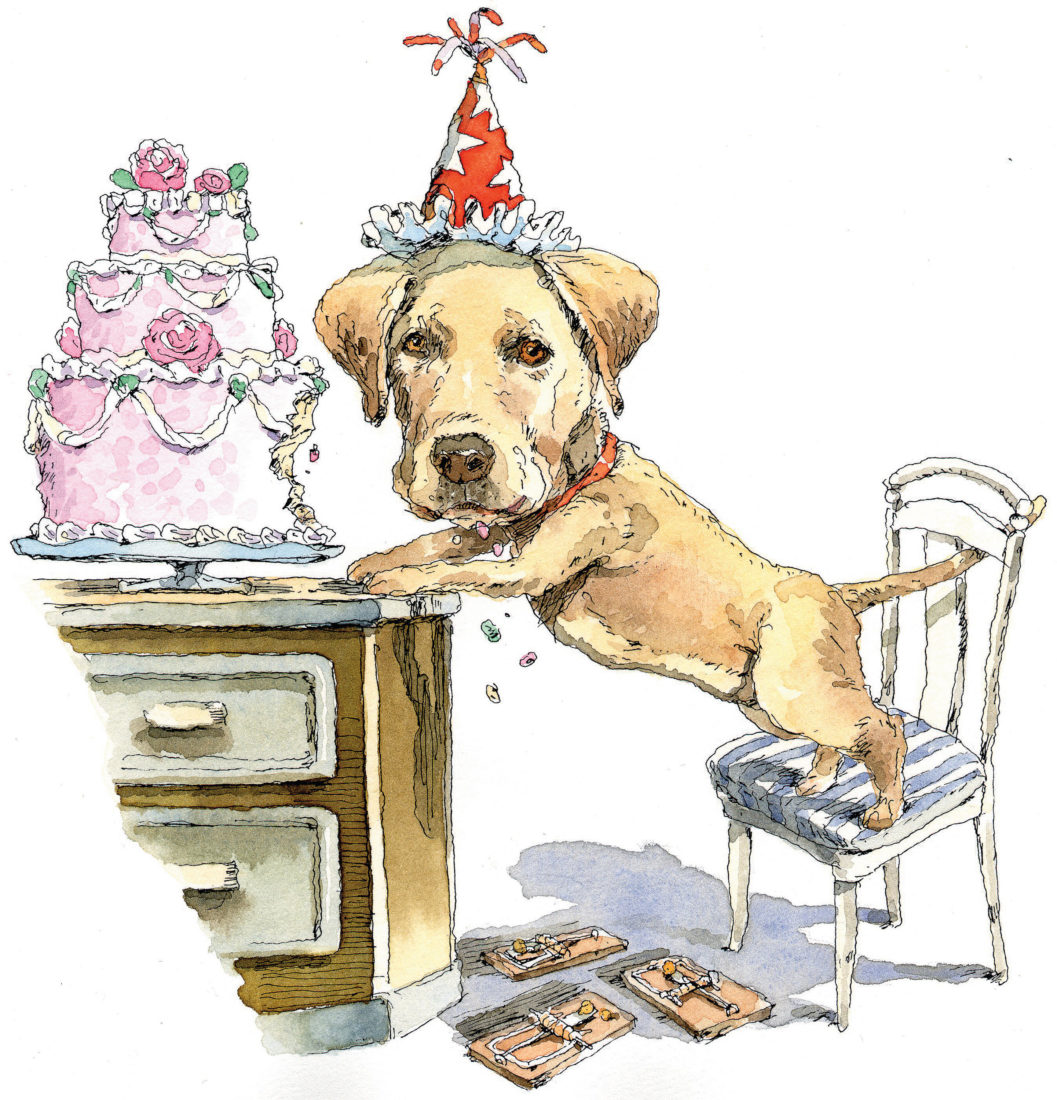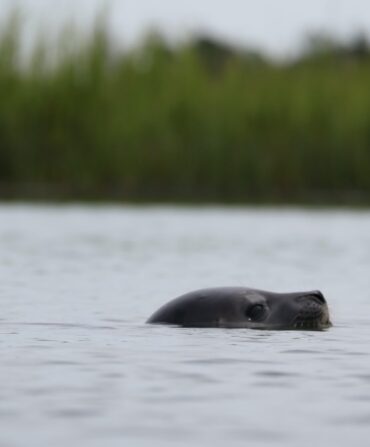She marked the beginning of our marriage, arriving just a few months after we walked down the aisle, during that heady time when life seems so full of hope and possibility. But no way were we having a kid, not yet, so Sweet Emma Pearl curled up in a little yellow ball and rode, whimpering, in Julie’s lap the entire four-hour drive home from my buddy’s house. Seven weeks old. She slept in our bed and lay down beside the tub whenever either of us took a shower and laid her head in Julie’s lap for every meal we ever had at home for close to a decade. “It’s not dirt if it came off Emma’s paws,” Julie liked to say, even when the dirt was swamp muck or the red clay from a Piedmont dove field. We loved that dog as only a young couple starting out in the world can love a dog that’s all their own. So to us it was only a charming part of her canine nature that she had the appetite of a goat.
We’ve all heard about hounds that can’t stay out of the garbage or refrain from chewing the television remote to bits. But Emma’s gustatory excesses went way beyond a lack of self-control. She was hardly a year old when we realized there was more to her munching than a puppy’s normal and expected oral fixations. Her first serious meal of something that only marginally resembled food was a three-pound bag of self-rising flour. We came home to find her on the kitchen floor, panting, face dusted as white as a mime’s, muzzle caked with marble-size globs of Martha White’s best. She was panting from thirst, and we fed her teaspoons of water at a time, fretting about the giant loaf of bread rising in her belly.
And it was on. Over her nine years, no amount of yelling, pleading, or chasing could keep her from ingesting whatever struck her fancy. She would cower at my thunderous ovations of rage, licking her lips. I doused the trash can with cayenne pepper, which she enjoyed immensely. I mined the kitchen counters with mousetraps to snap some sense into her paws. Nothing doing.
She ate onions beyond counting. She would hide them under her dog bed and gum them in the middle of the night.
Used Q-tips were a treasure not to be rushed, but slowly gnawed on like cud.
She could pick individual blackberries with her lips.
Once, I took a frozen smoked turkey breast out of the freezer, set it on the counter, then ran to the grocery store. When I returned, less than twenty minutes later, there was no turkey breast to be found. Just one tiny corner of a plastic bag and a single sprig of rosemary on the floor. Emma looked as if she’d been blown up like a pool toy. In the time it took me to buy a box of rice, she’d eaten close to eight pounds of turkey breast, bone, and plastic bag. All of it frozen hard as granite. She didn’t even break a tooth.
At the time, this was all a funny sideshow, but as Emma’s tastes were emboldened—and once we had kids—her feats of ingestion became more problematic. Our children learned to walk around the house like gibbons, arms stretched overhead, fingers grasping crackers out of Emma’s reach. Our solution to dirty diaper storage would have passed the security protocols at Fort Knox. She had a love for beaver poop that was undeniable. This was a particular offense to my hunting buddy, who often shared a seat with Emma on the odiferous ride home from the duck swamp.
Perhaps her most impressive infraction occurred the year I started fly fishing for striped bass. On my Christmas wish list were dyed bucktails, flashy tinsels, and strips of glittery foil—just a few of the ingredients for Clouser Minnows. “It never occurred to me,” my wife has said, many times since, “that the dog would be the least bit interested.”
When Julie walked into the house, she thought she’d stumbled onto a murder scene. In the middle of the living room, Emma had feasted on a five-pack of bright red bucktails, grinding the crimson ink into a three-foot circle of carpet. Elsewhere, blue and green orbs of color marred the floor, and everywhere was the shrapnel of chewed-up tinsel and foil. We had to rip up the Berber carpet. For a week I shoveled brilliantly ornamented poop from the backyard.
I’m absolutely convinced that Emma’s garbage-hound habits led to her ultimate demise. The official diagnosis was pancreatitis, and we never wondered what might have caused that. The first time it hit her hard, I was in the Alaska backcountry, unreachable for two weeks. Julie rushed Emma to the veterinarian with a request that he was all too willing to grant. “I don’t care how much it costs,” Julie told him. “But keep this dog alive until my husband gets home.”
She held on for another week and a half, then collapsed on the living room floor. This time Emma curled up in a big yellow ball, and lay whimpering, once again, in Julie’s lap. We sat there together, the three of us on the floor, just like in the old days, marveling at all the love we’d managed to hold since Sweet Emma Pearl came home.
The next morning I had to cook seven pigs for a church barbecue, and once I got the coals started I carried Emma to the car, and Julie and I drove her to the vet. I dug sweet Emma’s grave while bawling like a baby, hands slicked with hog fat, the vinegary tang of barbecue sauce wafting over the backyard.
Every now and then I catch a glimpse of her headstone in the backyard under the tulip poplar, and I get the urge to take a greasy paper towel or the cut-off ends of onions and toss them on the grave. Some might figure that for a sacrilege. But I’m pretty sure my Emma would appreciate the gesture.








